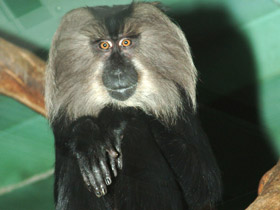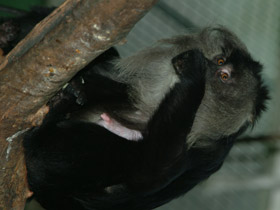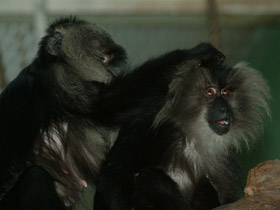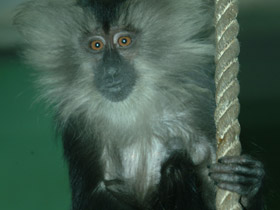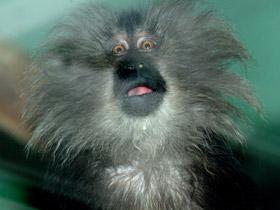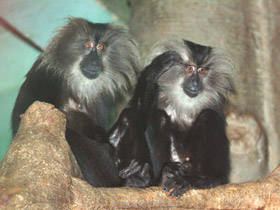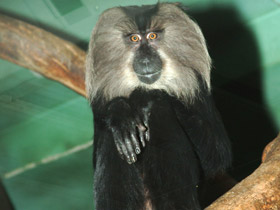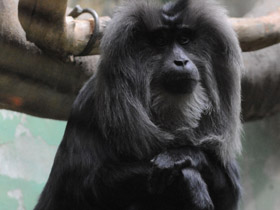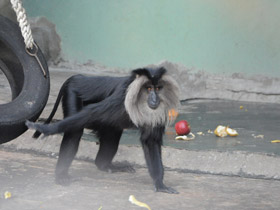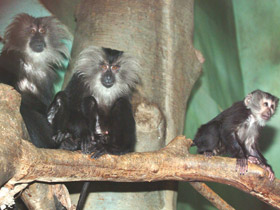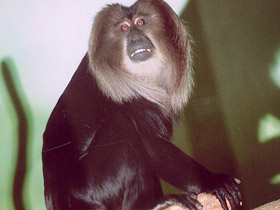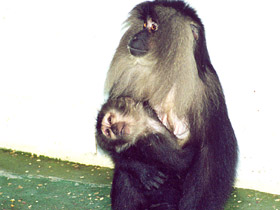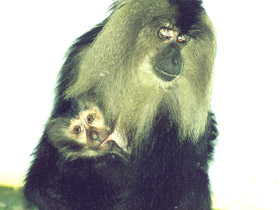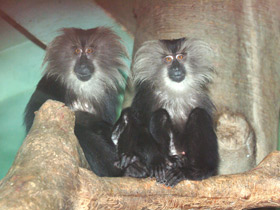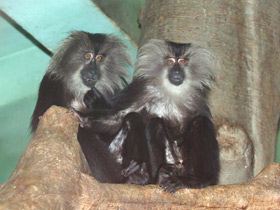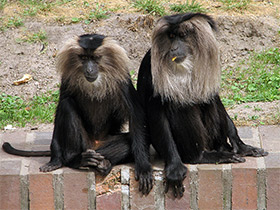The lion-tailed macaque (Macaca silenus), the wanderoo
The lion-tailed macaque (Macaca silenus), also known as the wanderoo, is an Old World monkey endemic to the Western Ghats of South India.
Particularities and distribution
Macaca silenus is a species of catarrhine primate of the family Cercopithecidae.
Macaca silenus have a very unusual appearance: they have a mane and a small tassel at the end of the tail (like a lion). They live only on the west coast of India, on hills covered with dense tropical evergreen forest, where the trees are at least 20 m high.
There are approximately 2,000 to 3,500 of this rare IUCN red-listed primate species remaining.
Social behaviour and reproduction
Small groups of monkeys, between 5 and 20 individuals, cling to the remotest corners of the forest. The leader of the herd is a male. Male Macaca silenus spend most of their time in the trees, but sometimes go down to the ground, or even into the water (in captivity they like water and swim well). Gestation lasts between 5 and 6 months, and usually 1 (very rarely 2) young are born.
Nutrition
They feed on fruits, nuts, flowers, young shoots of many tree species, as well as insect larvae, spiders, bird eggs and small vertebrates.
Threats
While lion-tailed macaques are preyed on by snakes, raptors, and large carnivores, the impact of natural predators on population size doesn’t compare to their largest threat. The largest threat to the lion-tailed macaque is habitat fragmentation due to large amounts of timber harvesting and exotic plantations, such as tea and coffee. This fragmentation leads to many issues that the lion-tailed macaques are facing. They are struggling to find food, being hit by cars, and being electrocuted by power lines. Due to their low numbers and high levels of fragmentation, they are also highly susceptible to inbreeding, which can cause many genetic issues. Their second largest threat is from humans hunting and trapping them for meat, especially within areas that have primates as their preferred food. There are also many human-primate conflicts occurring now due to macaques venturing out of their forests to find food.
Conservation and population
An assessment in 2003 for IUCN reports 3000–3500 of these animals live scattered over several areas in Tamil Nadu, Kerala, Karnataka. The lion-tailed macaque ranks among the rarest and most threatened primates. Their range has become increasingly isolated and fragmented by the spread of agriculture and tea, coffee, teak and cinchona, construction of water reservoirs for irrigation and power generation, and human settlements to support such activities. They do not live, feed or travel through plantations. Destruction of their habitat and their avoidance of human proximity have led to the drastic decrease of their population.

















